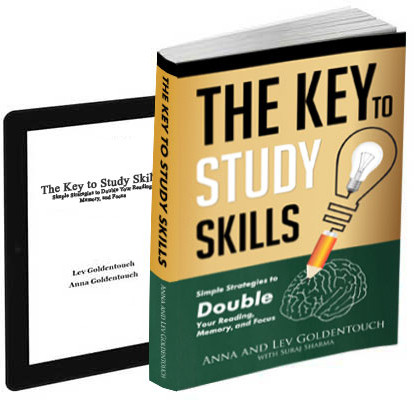In the realm of medicine, decisions often teeter between life and death, clarity and confusion. Beyond the measurable skills and clinical knowledge, there lies an intangible, yet essential faculty that shapes expert judgment—intuition. Intuition, the silent guide that helps doctors navigate complex cases, is often undervalued, misunderstood, or even feared in the rigorously scientific world of modern healthcare. Yet, when it fades, the consequences are deeply unsettling. Medical professionals can become paralyzed by doubt, hesitant in action, and disconnected from the certainty that once defined their practice. Exploring the nature of intuition, its loss, and the journey to reclaim it is vital not just for clinicians but for anyone interested in the intersection of reason, emotion, and professional decision-making.
Understanding Intuition in Clinical Practice
Intuition in medicine is not merely guesswork or superstition. It represents a rapid, subconscious integration of past experiences, pattern recognition, emotional cues, and environmental familiarity. This intuitive process allows physicians to make decisions under pressure, often without being able to articulate every step of their reasoning. Neuroscientific and psychological research supports this dual-track model of thinking: “System 1” thinking, as described by Daniel Kahneman, refers to fast, intuitive responses, while “System 2” involves slow, deliberate analysis. For seasoned professionals, System 1 dominates much of their decision-making due to years of accumulated clinical exposure.
Historical Perspectives on Intuition in Professional Judgment
The relevance of intuition has been documented across various fields. Chester Barnard’s seminal 1938 work, The Functions of the Executive, highlighted logical and non-logical decision-making, positioning intuition as an essential non-logical component. Herbert Simon’s idea of “bounded rationality” further emphasized that real-world decisions often rely on instinctual shortcuts when rational analysis reaches its limits. Even in business, surveys indicate that over 60% of CEOs regularly use gut feeling—an acknowledgment that not all judgments can be based solely on data.
The Conflict Between Intuition and Science
Despite its effectiveness, intuition has long stood at odds with scientific rationalism. Science seeks to demystify and codify phenomena through logic, observation, and reproducibility. Intuition, derived from the Latin intueri, meaning “to look within,” taps into internal perceptions that resist such quantification. In this light, intuition has been both revered for its utility and marginalized for its ambiguity. The medical field, deeply rooted in evidence-based practice, is particularly wary of relying on non-verifiable inputs. Yet, in high-pressure situations where evidence is inconclusive or unavailable, intuition often becomes the decisive force.
What Happens When Intuition Disappears
The absence of intuition can be profoundly destabilizing for professionals. Clinicians who once performed seamlessly may begin second-guessing every decision, overanalyzing basic tasks, or hesitating in emergencies. This cognitive disruption not only delays treatment but also undermines the professional’s confidence. The psychological toll is considerable; doubt, anxiety, and fear replace once-automatic responses. When intuition fades, it often leads to a state of “misintuition,” where judgment is clouded by irrational fears rather than clear insight. This internal imbalance can mimic the battle between “anxiety vs intuition”, where emotional distress is mistaken for gut instinct, leading to dangerous indecision or impulsive errors.
The Mechanics of Intuition Loss
Modern psychology offers frameworks to understand how intuition falters. Joel Pearson’s SMILE model provides a comprehensive lens. According to Pearson:
- S stands for self-awareness: Emotional states like fear or stress can impair intuitive functioning.
- M relates to memory: When the subconscious fails to retrieve relevant past patterns, intuition cannot operate properly.
- I indicates impulsivity: Mistaking an emotional urge for intuition can result in flawed decisions.
- L highlights low-probability bias: Overestimating rare risks distorts intuitive accuracy.
- E refers to environmental familiarity: A disrupted or unfamiliar setting can block intuitive signals.
These disruptions often occur simultaneously, producing a cascade of doubt and hesitancy that paralyzes even seasoned professionals.
When Rationality Falls Short
In the absence of intuition, professionals often revert to rational analysis. While necessary, this alone can be inadequate in high-stakes scenarios. Clinical studies, textbook guidelines, and case comparisons may offer structure, but rarely provide certainty. The ambiguity of real-world medicine demands a faculty that synthesizes incomplete information into actionable insight—precisely the domain of intuition.
In such instances, some practitioners find themselves gravitating toward introspection or spiritual frameworks to rediscover confidence. This mirrors broader philosophical tensions, such as “intuition vs fear”, where internal warnings must be separated from emotional exaggeration. Distinguishing between the two becomes a critical skill in clinical environments.
The Role of Doubt and Self-Consciousness
Doubt is not merely a passive absence of certainty; it is an active force that interrupts thought, inhibits movement, and intensifies self-consciousness. In a clinical context, this can lead to breakdowns in basic motor functions, such as inserting an IV or selecting the right medication dosage. Overthinking replaces instinctive flow, and even simple actions feel burdened with existential weight. The mind, unable to trust its instincts, becomes a battlefield of competing inner voices, each proposing different courses of action without the confidence to choose one.
When the Void Becomes Visible
The psychological sensation of losing intuition can resemble gazing into a void. Medical knowledge remains intact, yet the internal compass to apply that knowledge falters. Even thorough reviews of clinical literature offer little comfort, especially when findings conflict or don’t quite align with the current case. This cognitive dissonance contributes to a sense of being unmoored—a state where rational understanding coexists with deep existential uncertainty.
Professionals often describe this sensation in metaphysical terms, using language that borders on spiritual. The encounter with this “nothingness” recalls the idea that “death is just another path”, not in a literal sense, but as a metaphor for crossing into unknown cognitive territory where logic and reason no longer suffice. In this liminal space, the return of intuition is not guaranteed, and the professional must navigate unthinkingly.
Can Intuition Be Taught?
Some researchers argue that intuition can be cultivated. Gary Klein, in The Power of Intuition, proposes that intuitive expertise can be developed through repetition, reflection, and feedback. However, the challenge lies in articulating what intuition feels like or where it originates. Even legendary artists and athletes often struggle to describe their intuitive process. They may review hours of footage or analyze performances in minute detail, yet fail to recreate the intuitive spark. For this reason, intuition remains notoriously difficult to transfer from one person to another.
Faith as a Precursor to Intuition
In moments where neither data nor reason provides clarity, a leap of faith is often required. This is not faith in the religious sense, but faith in one’s internal faculties. It is a commitment to act despite uncertainty. Historical figures such as Dwight Eisenhower have embodied this. On the eve of the D-Day invasion, he faced conflicting counsel, unpredictable weather, and enormous stakes. Ultimately, his decision to proceed was not derived from additional information, but from a quiet internal conviction—intuition reborn through faith.
This leap is not reckless; it is grounded in a deep familiarity with the terrain, a subconscious weighing of risks, and a readiness to bear responsibility. When intuition aligns with such a faith, it manifests not as hope or optimism, but as purposeful resolve.
The Return of Intuition
The return of intuition is often subtle. It doesn’t announce itself with fanfare, but with a quiet release from mental rigidity. Self-consciousness fades. Actions begin to flow naturally. Decisions, once paralyzed by overanalysis, regain momentum. The relationship with doubt also changes. Instead of resisting it, the professional accepts it as part of the landscape—an ever-present companion, not an adversary.
This transformation can be likened to a chemical shift. When saturation is reached, and just one more element is introduced, the solution crystallizes. Similarly, when the mind reaches a point of emotional and intellectual synthesis, intuition reemerges. It feels like clarity after a long storm—not because every answer is known, but because the internal compass has returned.
The Mystery That Remains
Science can model intuition’s behavior and track its disruptions. But it still cannot fully explain why or how intuition returns. The phenomenon resists complete comprehension. Intuition does not conform to binary logic, nor can it be distilled into a checklist. Unseen patterns, emotional resonance, and the wholeness of human experience shape it. Professionals who regain it often do so not by force, but by surrender, recognizing the limits of intellect and allowing a deeper form of wisdom to guide them once more.
In conclusion, intuition in medicine is not a luxury or an ornament—it is a necessity. It binds knowledge, emotion, and action into a cohesive whole. When it fades, professionals may falter; when it returns, they find themselves again. Understanding and respecting this process is critical not only to healthcare but to the broader human experience.

Get 4 Free Sample Chapters of the Key To Study Book
Get access to advanced training, and a selection of free apps to train your reading speed and visual memory

